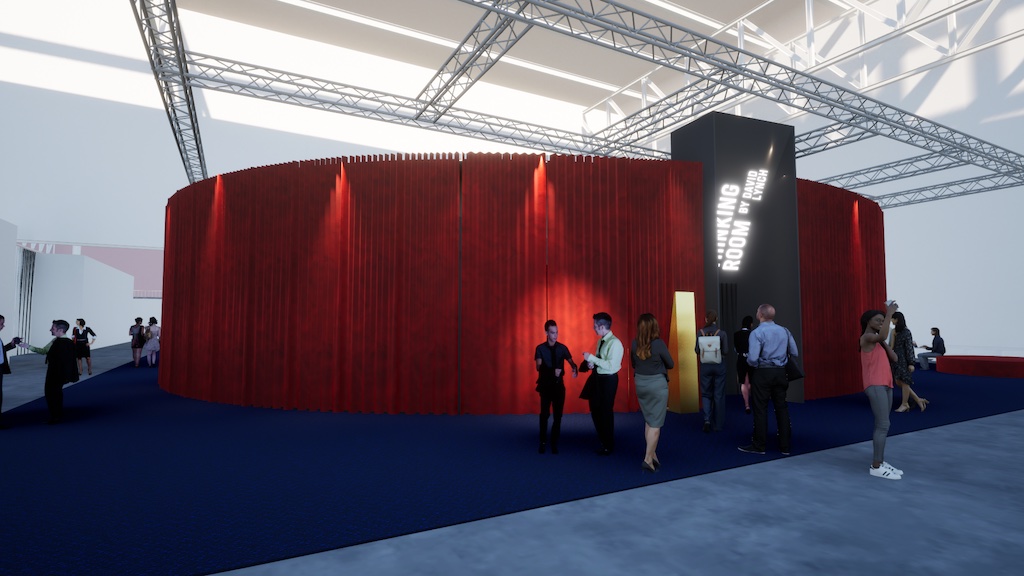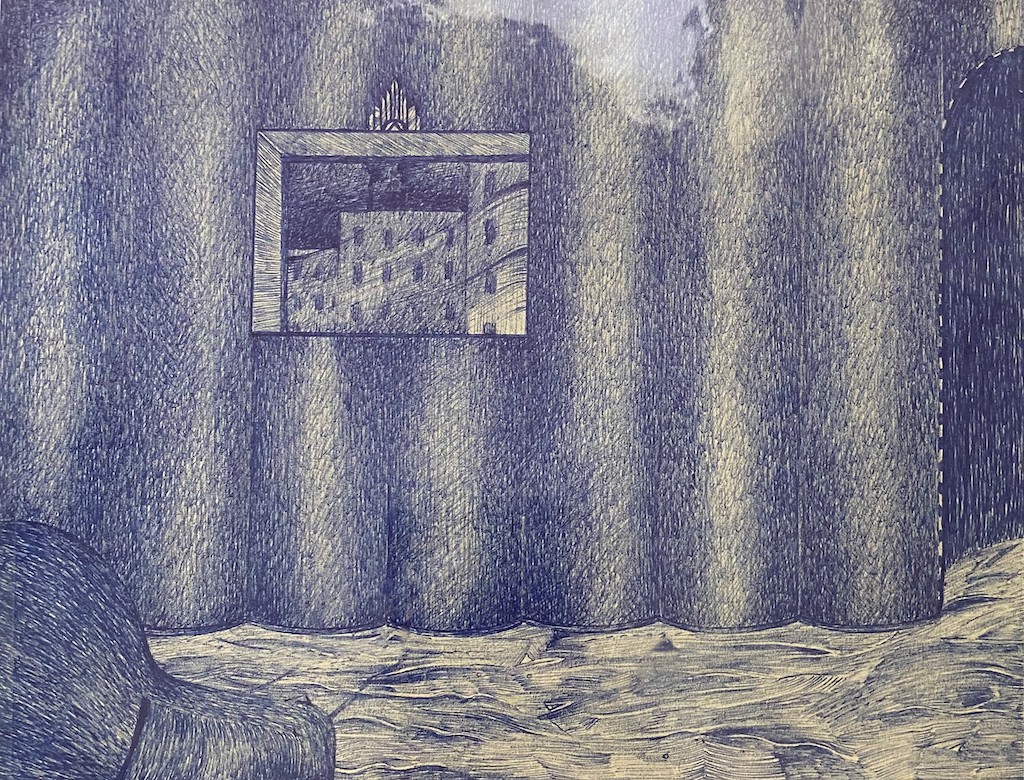A Thinking Room Through David Lynch’s two identical imagined and imaginative rooms, symbolic gates which have to be entered to immerse oneself in the exhibition, visitors to the Salone del Mobile.Milano is treated to an immersive experience of silence and reflection, in search of a meaning and a connection with the space, with others, and with the other.
For its 62nd edition, the Salone del Mobile.Milano has chosen David Lynch, the director of films that channel the subconscious, to provide an original and metaphysical narration and reflection on the production of interiors and how this can shape and create spaces that will strike up a deep, sometimes symbiotic and symbolic relationship with those who will live in them and furnish them. The upshot is an evocative, enveloping, and visionary installation offering an intimate and profound experience. Harnessing the scenographic language of film and theatre, Interiors by David Lynch.

A Thinking Room (Pavs. 5-7) consists of two relatively small, empty rooms, apart from the large central armchair equipped with tools for writing, drawing, and painting and seven cylinders that connect it to the ceiling, a few niches with images – if not downright disturbing, unsettling at the very least – chosen by the filmmaker, a mirror and a clock. All around, an undulating curtain gives rhythm to the walls and marks the time, below one’s feet are slats like ocean waves, and above one’s head a curved, gilded ceiling connected to the tubes and the armchair by seven strands of light.
The emptiness, however, is only illusory: the rooms are full of blue, of gold, of light, and of silence. David Lynch allows us to pass through them and experience them – preferably in solitude – just before we come into contact with their very opposite: the crowd, the buzz, the multitude of projects being showcased at the fair. Why? Perhaps because an empty room can teach us how to become empty receptacles, yet ready, capable, and welcoming. The ability to be in a room like this is to free the heart and mind, to cast opinions, assumptions, and prejudices aside so that other spaces, other possibilities, can be revealed, and new thoughts, perceptions, images, and sensations can be welcomed. So, perhaps, these blue rooms prepare us for the next experience, that of the Salone, in a more conscious, profound, and concentrated way.

David Lynch said: “Even thinking about A Thinking Room is nice to think about. A room conducive to thinking.” Antonio Monda, curator of the project, tells how Lynch enthusiastically welcomed the idea of creating two spaces to “give” to those visiting the fair this week; for its part, the Salone was well aware that the interiors of the director’s films – and probably the furniture he builds with his own hands and of which his studio is full – do not represent a simple landscape, but are the reflection of the state of mind of the protagonists, who exist in a state of perpetual, precarious balance.

“For Lynch,” Monda explains, “there is nothing that is inanimate and nothing that does not possess an intimate, vibrant vitality. This shines through in everything he creates: in his visionary films, in his figurative art, and in the furniture he designs. The two Thinking Rooms created for the Salone del Mobile plunge us into a harmoniously Press thought-out universe, thanks to the vital thrust of every single detail, managing to seduce us by rearming that true art does not provide answers, but asks questions”. In Lynch’s work, every one of the interiors is a character endowed with its own life, which is up to the viewer to interpret. These Thinking Rooms are enveloping places, deep and evocative, places in which every impulse, every spasm, and every hope finds a moment of reflection, perhaps of stillness, even. This is what makes them the ideal antechamber for embarking on visits around the fair.
Maria Porro, President of the Salone del Mobile.Milano, had this to say: “David Lynch allows us to enter his world and thought process. His Thinking Rooms are places that inspire, suggest, and send messages. They are places of synaesthesia, i.e. spaces that offer stimuli that involve multiple senses, different from those that would normally be used to process those stimuli: here, you can “feel” blue and “see” silence. Here, the protagonist is sensory overload – which will also serve to better interpret the design visions outside these confines.”

Lombardini22, a leading group on the Italian architecture and engineering scene, designed the masterplan for the positioning and the architectural footprint of the curved perimeter leading to David Lynch’s work, devised in such a way as to give maximum scenic impact to the rooms whilst also guaranteeing good, close relations with the exhibitors, without impeding their visibility, for instance. Thus, the spaces envisioned by the filmmaker are incorporated inside two ovoid-shaped shells, side by side and symmetrical. Between the perimeter of the shells, made of a theatrical and cinematographic red curtain, and the Thinking Rooms is an intermediate space that, through a large full-height portal, welcomes visitors as they make their way to the actual entrance to the rooms. It is a soft waiting space, made up of carpet, velvet, and seating, an intimate and spectacular backstage. Or, to take the formal notion of the egg further, it is a metaphorical place of comfortable amniotic fluid, in which to immerse oneself to access a state of suspension and cushion the dizzying experience of the fair, preparing oneself for the more cozy and reflective dimension of the rooms. Here, Delfino Sisto Legnani’s signature shots document the process of creating the Thinking Rooms. The Interiors by David Lynch. A Thinking Room project was carried out in collaboration with the Piccolo Teatro di Milano, which translated David Lynch’s fascinating imagery and artistic thinking into a material reality. By harnessing a work process that unfolded dynamically in different directions and in different phases, bringing the technical/operational, and creative plans together, the Piccolo Teatro has given shape to the instructions and vision of the brilliant film director.
